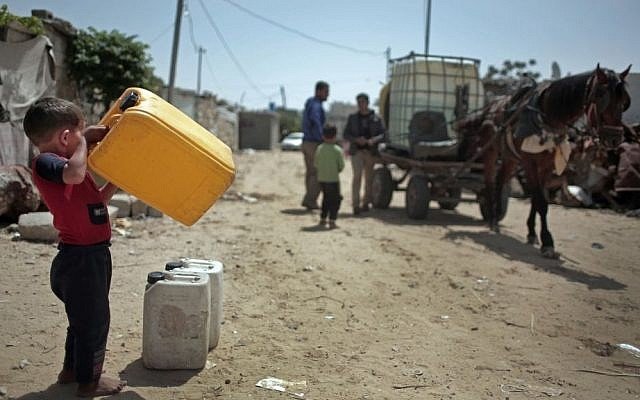
Australian surf life savers once used the beach in Gaza to put on an impressive display of their skills for soldiers serving in Palestine. Surviving British footage from about 75 years ago shows a pristine and spectacular setting which could be any beach, anywhere in the world.
But now Gaza, subjected to a near-total blockade by Israel since 2007, is best described as the world’s largest, open air prison.
According to a succession of United Nations reports — the latest in July — the Gaza Strip is on track to becoming uninhabitable by 2020. The Palestinian territory faces a combination of skyrocketing poverty, severe lack of infrastructure, polluted and inadequate water supplies, and severe restrictions on the movement of people and goods.
The Palestinian territory is home to 1.85 million people, the majority refugees or descended from refugees from the ethnic cleansing that accompanied Israel’s founding in 1948.
The UN estimates the cost of providing even the most basic services in the Strip this year to be US$371 million, with no certainty the funds can be found. UN Secretary-General Antonio Guterres recently visited the territory to announce the emergency release of $4 million from the UN Central Emergency Response Fund for operations in Gaza.
Successive military attacks on the territory by Israel, with Israel’s 2014 war on Gaza killing more than 1500 civilians, has worsened already desperate shortages of generator fuel, electricity and building materials. With electricity only available for three-to-four hours a day at best, it’s no longer accurate to talk about a “productive sector” of Gaza’s economy.
Agricultural output did pick up after 2014, it still falls short of levels achieved before the 2007 blockade. Agricultural output must also be seen alongside the precarious nature of food security and the uncertainty of successfully exporting any surplus.
Israel may allow some trucks carrying produce to cross a few designated checkpoints, but it can delay them until produce is too spoiled to sell.
Food insecurity is widespread. About 47% of Gazans are “food insecure” and reliant on some form of food aid — up from 44% in 2012. With food becoming increasingly expensive and unemployment at 42%, the territory is looking at nearly half its population being in danger of chronic malnutrition.
Chronic hunger means an inability to fight disease and childhood malnutrition and illness can have terrible impacts on development and educational attainment. Sick, malnourished adults find it much harder to farm or work.
Time spent trying to access treatment and the danger of trying to cross into the occupied Palestinian territory of the West Bank for services unavailable in Gaza is time away from earning an income.
Gazan hospitals and clinics are chronically short of medicine and equipment as a direct result of Israel’s 10 year long blockade of the Strip. Israel blocks badly needed medicines and equipment from entering the territory.
Guterres used his recent visit to Gaza and the West Bank to call for an end to Israel’s blockade. But the humanitarian crisis caused by Israel’s blockade is no accident — it is the point of the siege.
With Israel doing everything it can to secure all of Gaza’s access to the Mediterranean Sea, UN predictions of the territory becoming unliveable look set to become true unless Israel is forced to change course.